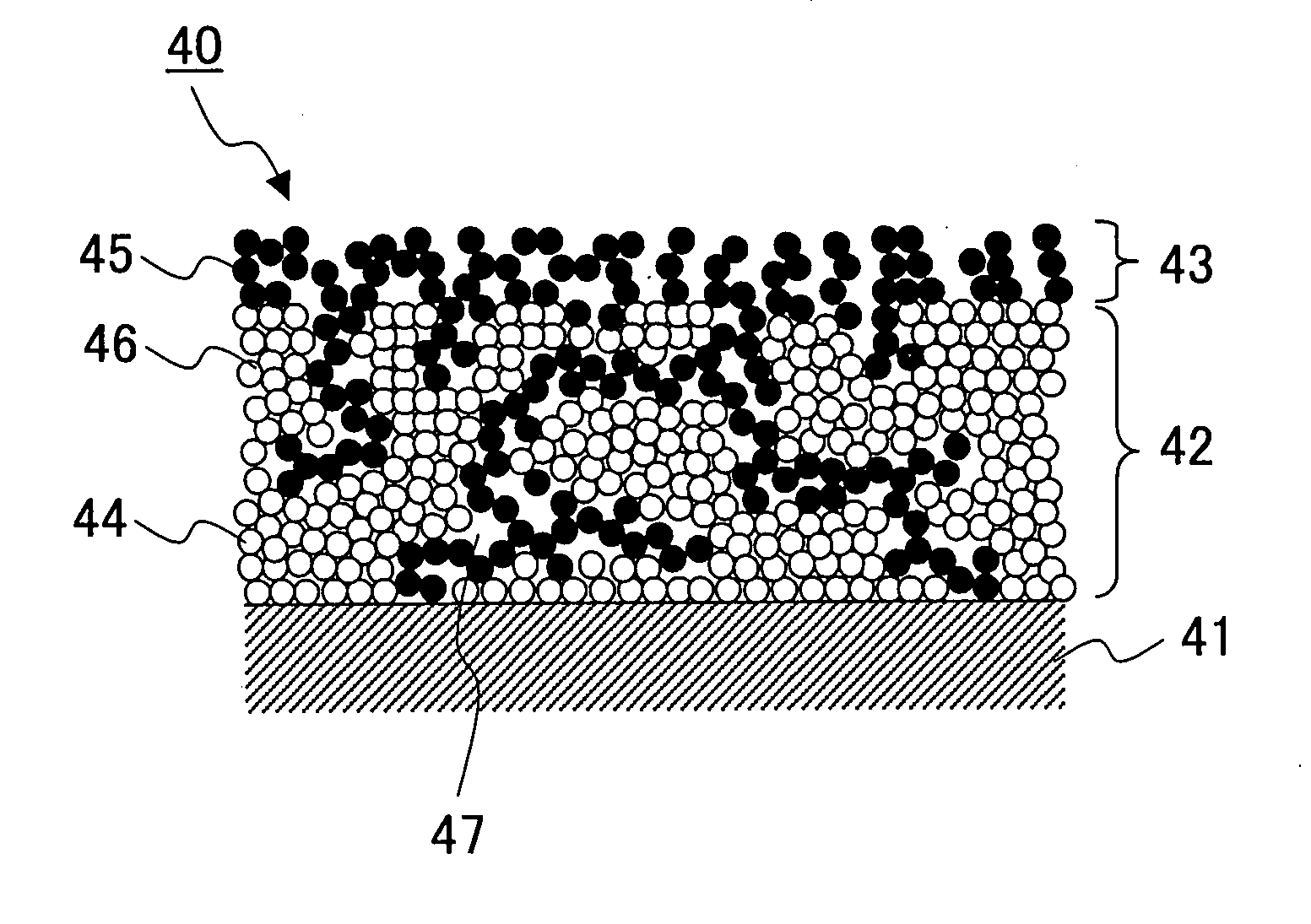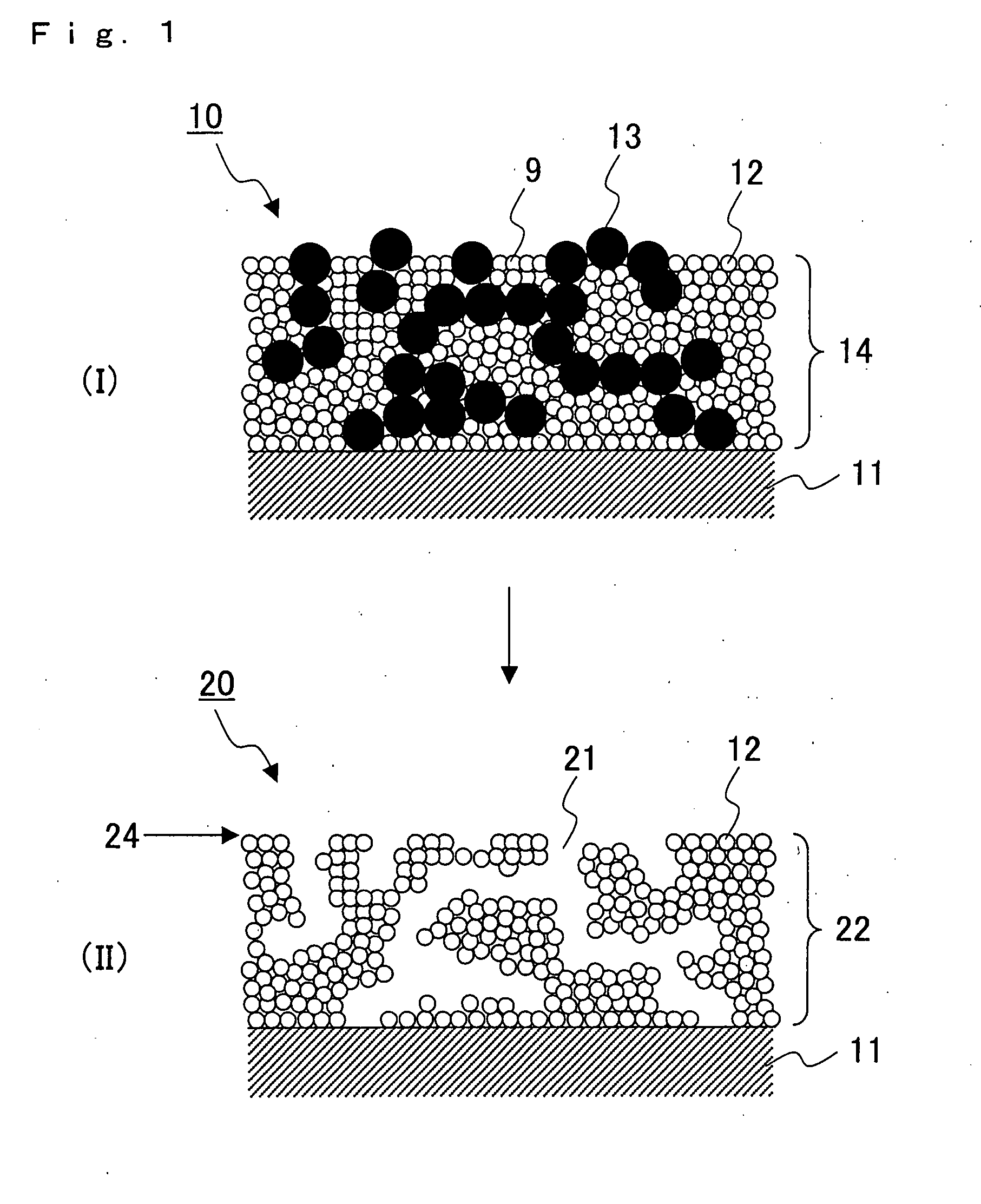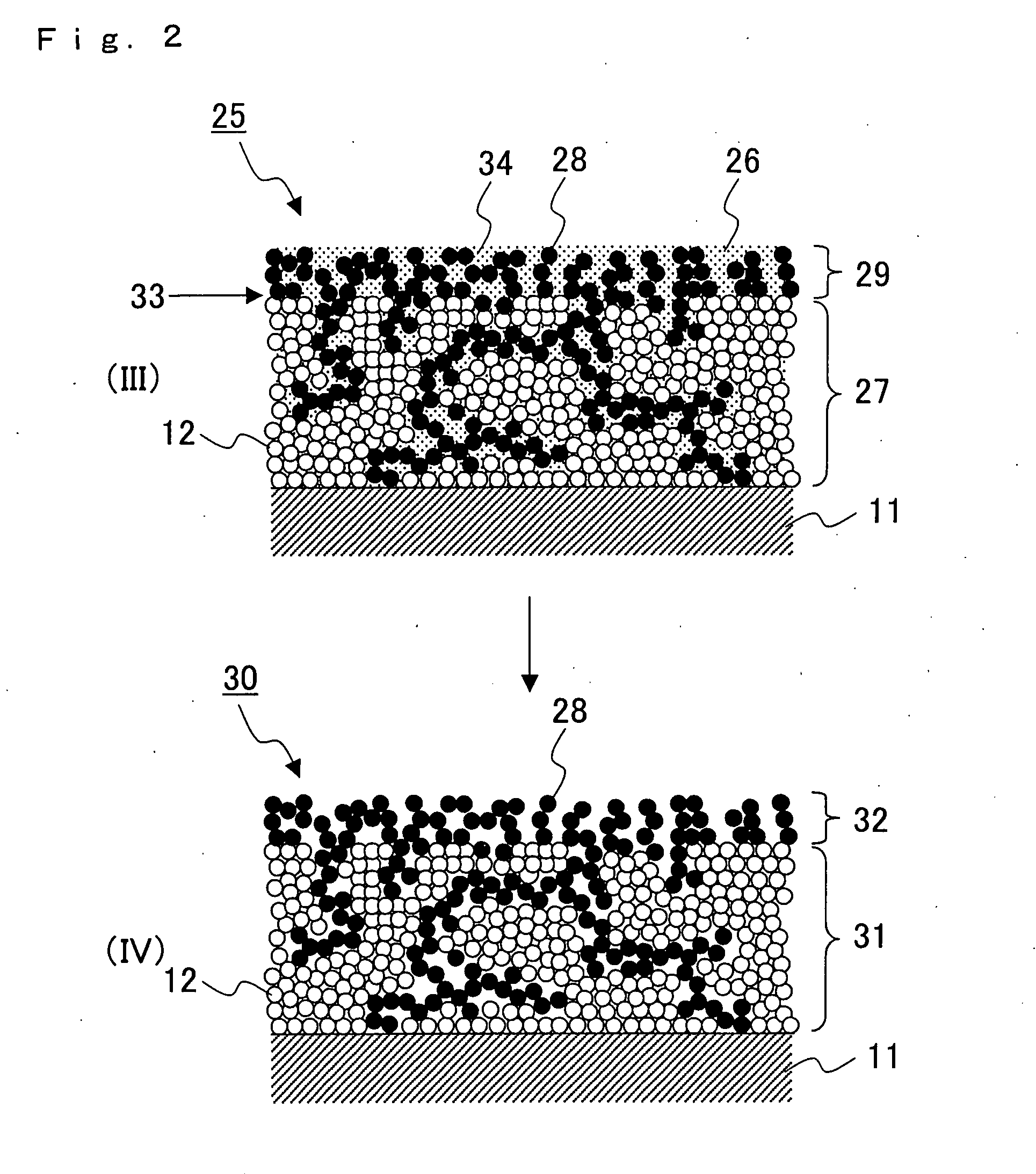Solid Oxide Type Fuel Battery Cell and Process for Producing the Same
a fuel battery and solid oxide technology, applied in the field of solid oxide fuel cell cells, can solve the problems of increasing the limit of the three-phase interface, difficult to control the shape of the liquid component, and difficult to control the shape of the pores after burning, and achieve the effect of small conductivity reduction of the electrolyte layer
- Summary
- Abstract
- Description
- Claims
- Application Information
AI Technical Summary
Benefits of technology
Problems solved by technology
Method used
Image
Examples
example 1
Preparation of Fuel Electrode Layer
(Preparation of Slurry for Forming Fuel Electrode Layer)
[0102]55 g of nickel oxide (NiO), 45 g of scandia ceria-stabilized zirconia (10Sc1CeSZ), 10 ml of di-n-butyl phthalate, 2 ml of octyl phenyl ether, 2 ml of a dispersant (“Nonion OP-83RAT” manufactured by NOF Corp.), 10 g of polyvinyl butyral resin (manufactured by Wako Pure Chemical Industries, Ltd.), 80 ml of isopropanol, and 80 ml of acetone were added to a ball mill, and mixed at room temperature for 24 hours. The solvent was evaporated from the resulting slurry using an evaporator under reduced pressure to make the viscosity of the slurry 10,000 mPa·s, thereby obtaining a slurry A for forming a fuel electrode.
[0103]Nickel oxide (average particle diameter: 7 micrometers)
[0104]Scandia ceria-stabilized zirconia (scandia content in zirconia: 10 mol %, ceria content in zirconia: 1 mol %, average particle diameter: 0.55 micrometers)
(Baking of Slurry for Forming a Fuel Electrode Layer)
[0105]A slu...
example 2
[0125]Preparation of a fuel electrode, preparation of an electrolyte substrate, formation of a porous electrolyte layer, and formation of an air electrode layer were carried out in the same manner as in Example 1, except for using 100 g of lanthanum strontium manganate instead of 82 g of lanthanum strontium manganate and 18 g of scandia ceria-stabilized zirconia used in the preparation of the slurry for fuel electrode layer to obtain a cell for solid oxide fuel cells J. The volume ratios of the scandia ceria-stabilized zirconia and lanthanum strontium manganate to the apparent volume of the air electrode substance-filled porous electrolyte layer in the air electrode substance-filled porous electrolyte layer of the cell for solid oxide fuel cells J were respectively 56% and 12%.
Performance Evaluation
[0126]The same experiment as in Example 1 was carried out except for using the slurry for forming an air electrode used in Example 2 instead of the slurry for forming an air electrode G. ...
PUM
 Login to View More
Login to View More Abstract
Description
Claims
Application Information
 Login to View More
Login to View More - R&D
- Intellectual Property
- Life Sciences
- Materials
- Tech Scout
- Unparalleled Data Quality
- Higher Quality Content
- 60% Fewer Hallucinations
Browse by: Latest US Patents, China's latest patents, Technical Efficacy Thesaurus, Application Domain, Technology Topic, Popular Technical Reports.
© 2025 PatSnap. All rights reserved.Legal|Privacy policy|Modern Slavery Act Transparency Statement|Sitemap|About US| Contact US: help@patsnap.com



